

Houseflies (Musca domestica) can pose several problems in livestock environments, affecting the health and well-being of the animals. They pick up microorganisms from sources such as manure, decaying organic matter, and other contaminants, and then transfer these pathogens to animals. They may carry parasitic eggs or larvae, transmitting them to animals when they land on their bodies or in their living environments.
Controlling housefly populations in livestock settings is essential to mitigate these problems. We GREEN VICTORY introduce DISPOSABLE HOUSE FLY TRAP & HOUSFLY ATTRACTANT, an effective and economic technique to control this problem
It catches the common houseflies, blow flies etc., using an attractant lure and ensures you hygienic and effective protection for your farm. The disposable bags are of size 25*30cm which are double sealed for leak proof, so that it can retain a large no. of flies. 25 g water soluble bait sachet is included along with the fly bags. The bait may take several hours to become active considering the atmospheric condition. Our attractant is specifically formulated with Trimethylamine hydrochloride, Indole, (Z) 9-Tricosene, fishmeal and other ingredients in a unique combination to attract most of the house fly species. The Bait sachet dissolves, and it needs 24 hours for fermentation and then the House flies are attracted into the bags. This bag will keep on capturing house flies till it is filled with house flies. Once filled, dispose it as per state laws and fix another bag until the House fly population is eradicated. Our trap and attractant serve as the best choice for the depletion of house flies.
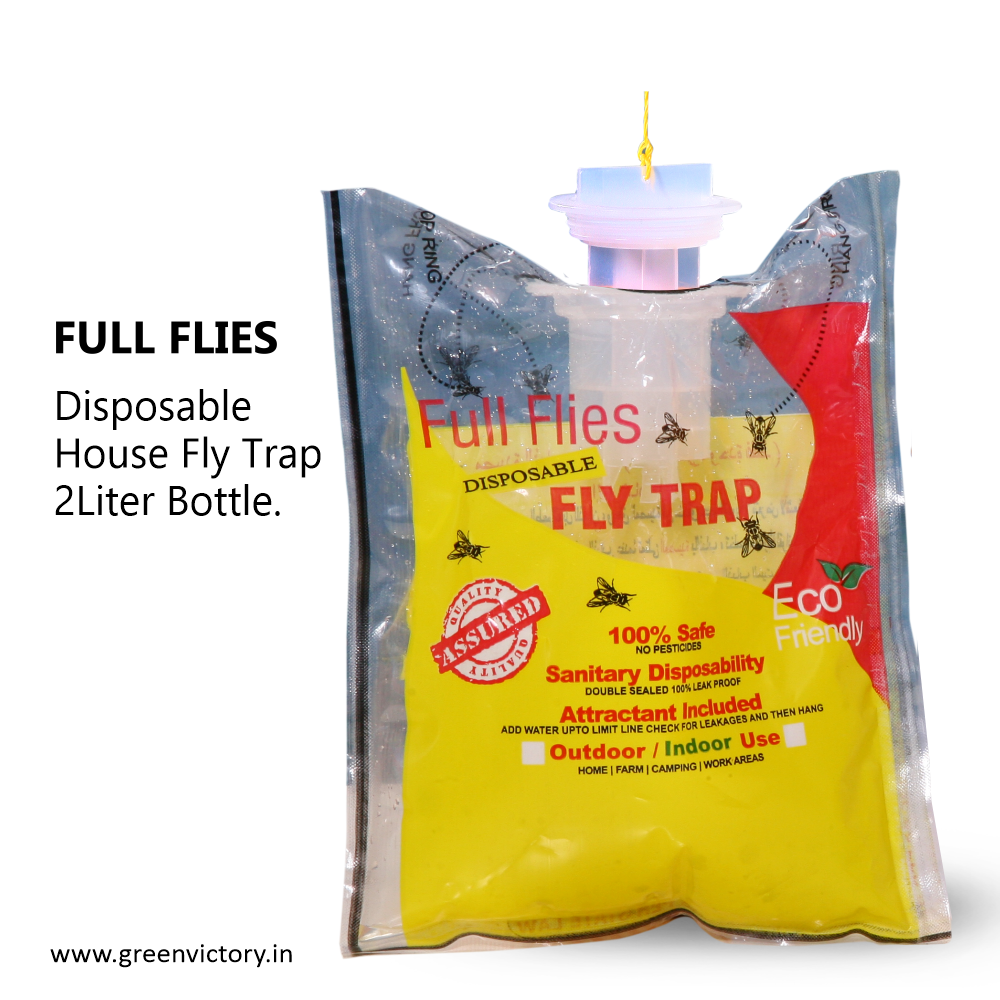

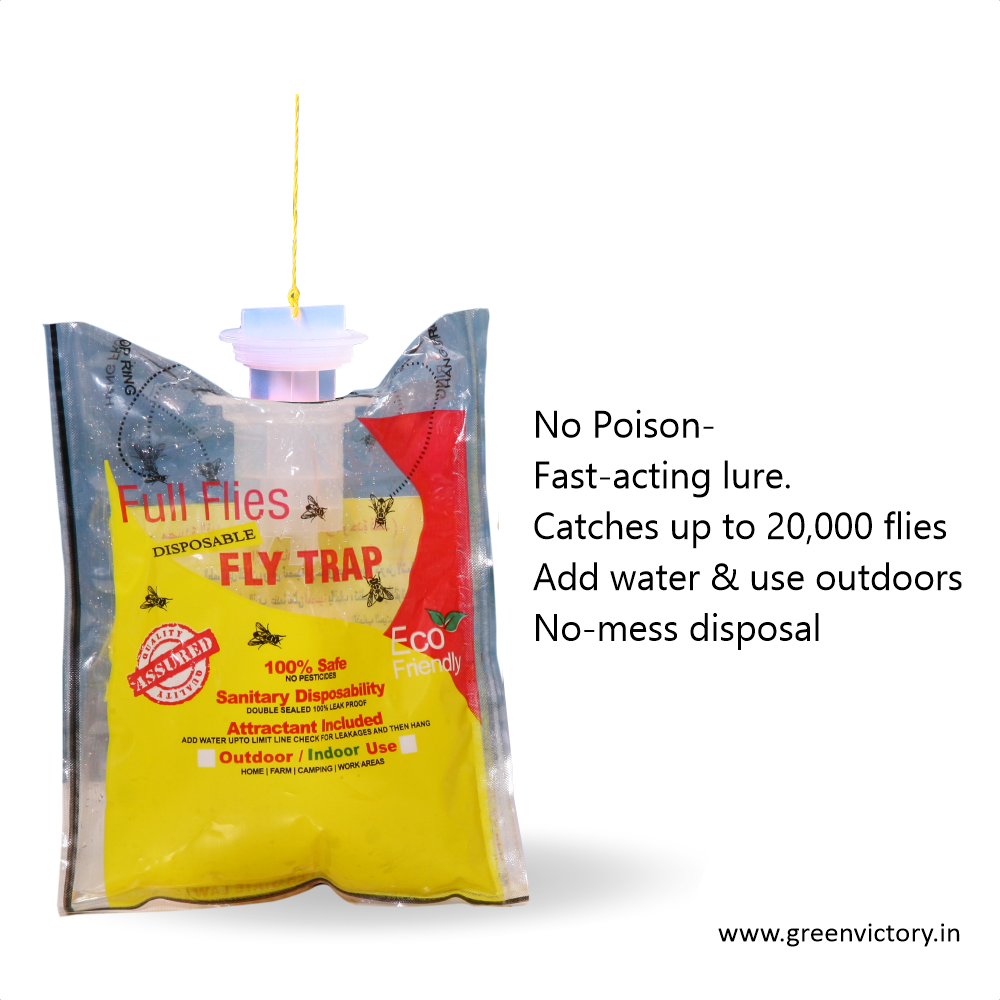
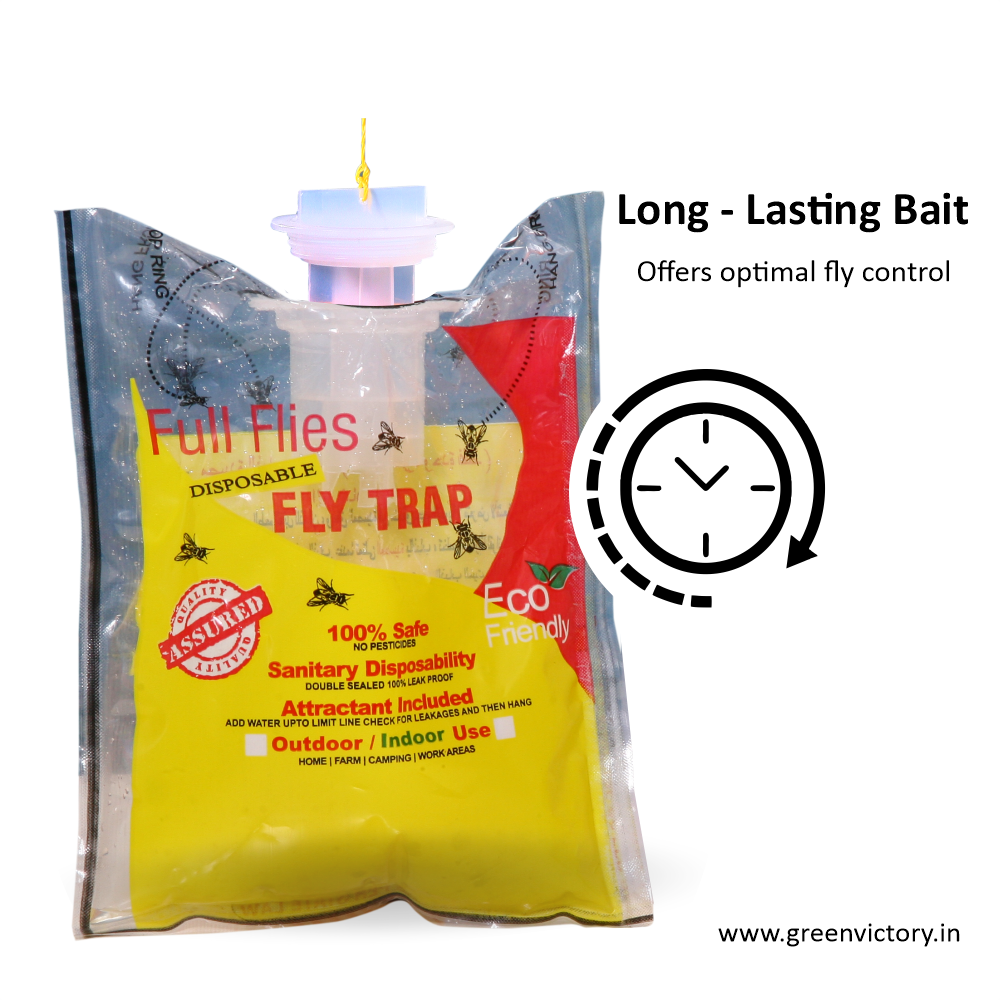
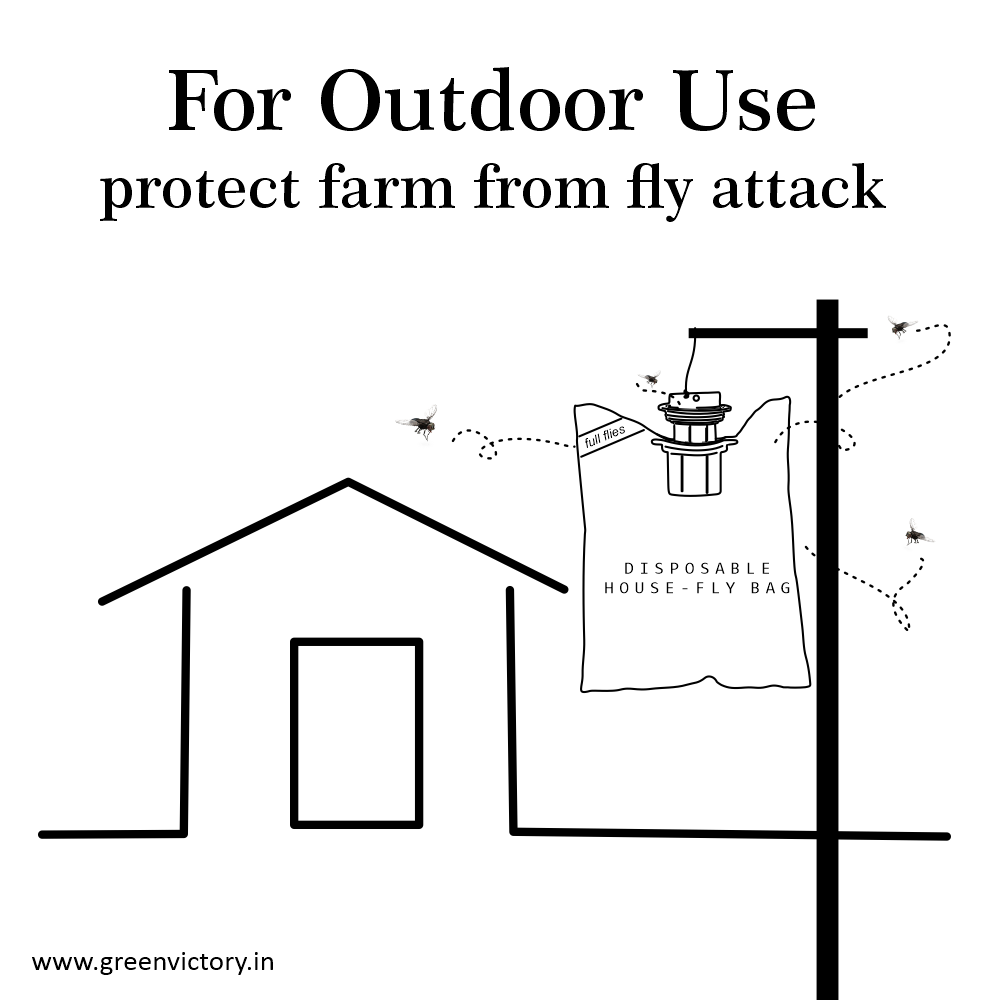
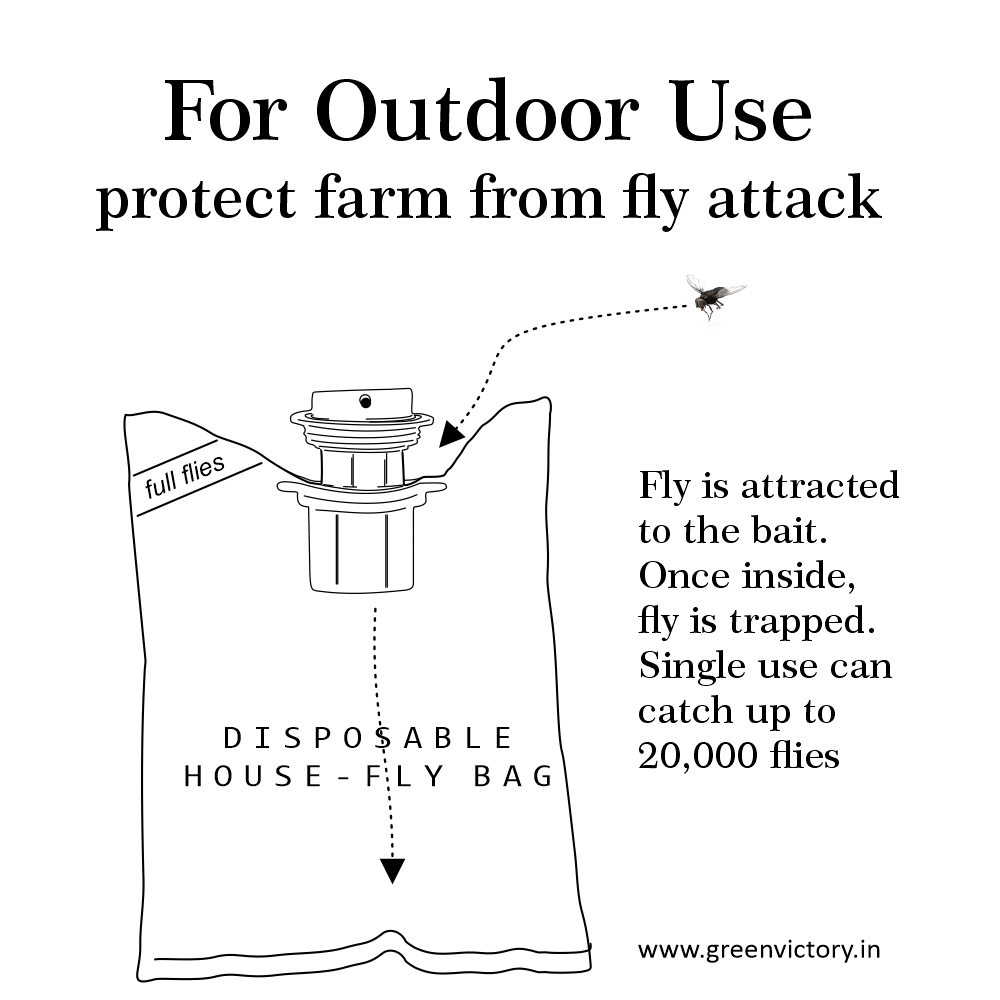
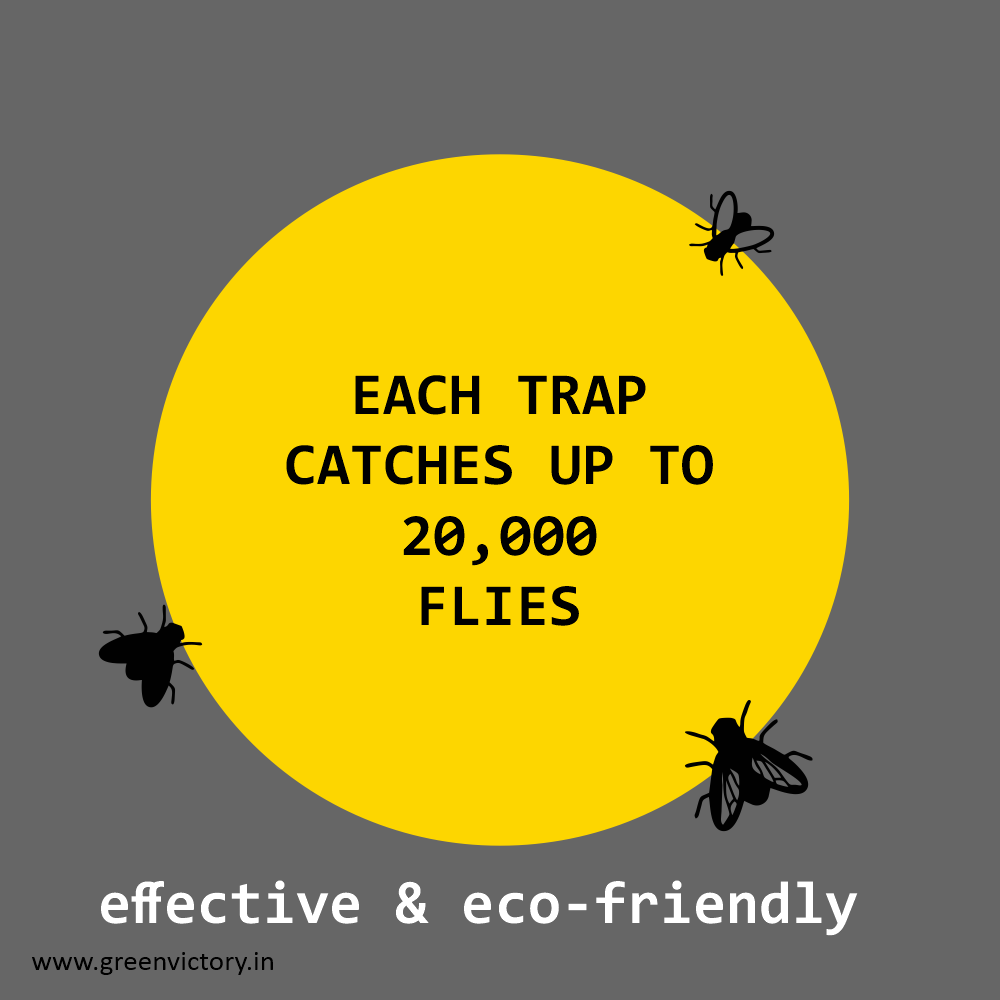
For Controlling End Musca Form Cattle Farm/ Poultry Farm/ Other Outdoor Farm Areas.
| Field Viability | 60 Days/ Till The Trap Get Filled |
| Trap Used | Disposable House Fly Trap |
| Number Of Trap Per Acre | 20 |
| Distance Between Traps | Uniform Distribution |
| Shelf Life | 2 Years |
| Target Crop | Cattle Farm/ Poultry Farm/ Other Outdoor Farm Areas |

Housefly adults and maggots can be found in and around dairy farms and cattle feedlots. Flies lay their eggs in manure, and the hatched maggots feed on the organic matter within it. Houseflies often gather in areas where cattle are fed and rest. This can lead to reduced milk production in dairy cattle. They feed on bodily secretions and open wounds of animals. Stress caused by fly infestations may affect the breeding behaviour and fertility of animals, potentially leading to decreased reproductive success. Our trap and attractant can definitely ensure the protection of animals from the flies and that will help to increase the productivity of your firm. Apart from many hazardous chemicals and pesticide, we offer a natural method to catch the flies and they are destroyed due to starvation.
The bait may take several hours before it becomes fully active (according to the outdoor atmosphere). Once active, the effectiveness will not diminish over time, providing optimum fly control. When the trap is full, it can be disposed of cleanly. Hang in warm, bright areas for the best results.

The housefly life cycle has four phases: the egg phase, larva phase, pupa phase, and adult phase. After Male and female house-flies mate. They can lay over a hundred eggs at a time.
Housefly eggs are white and oval — like small grains of rice.
Within 24 hours, housefly larvae will emerge from the eggs. These are more commonly known as maggots. They look like little white worms squirming around where their mothers have left them and looking for food.
Feeding and storing energy are the priorities of maggots as they transition to the next phase. This is the reason why you always see maggots feeding on animal carcasses, leftovers in garbage cans, and other organic materials. They will feed for about five days.
After molting the maggots will form into protective shells — pupas. Inside pupas, the maggots will finally grow into legitimate houseflies. This phase can last up to six days.
Houseflies don’t have teeth. This is the reason why they feed by dissolving food with their spit and sucking the dissolved parts.Houseflies can live up to three months, but they usually die earlier because they have so many predators. Their average lifespan is only about 21. The females are ready to reproduce only a few hours after emerging from their pupas, and they can lay almost a thousand eggs in their lifetime.
